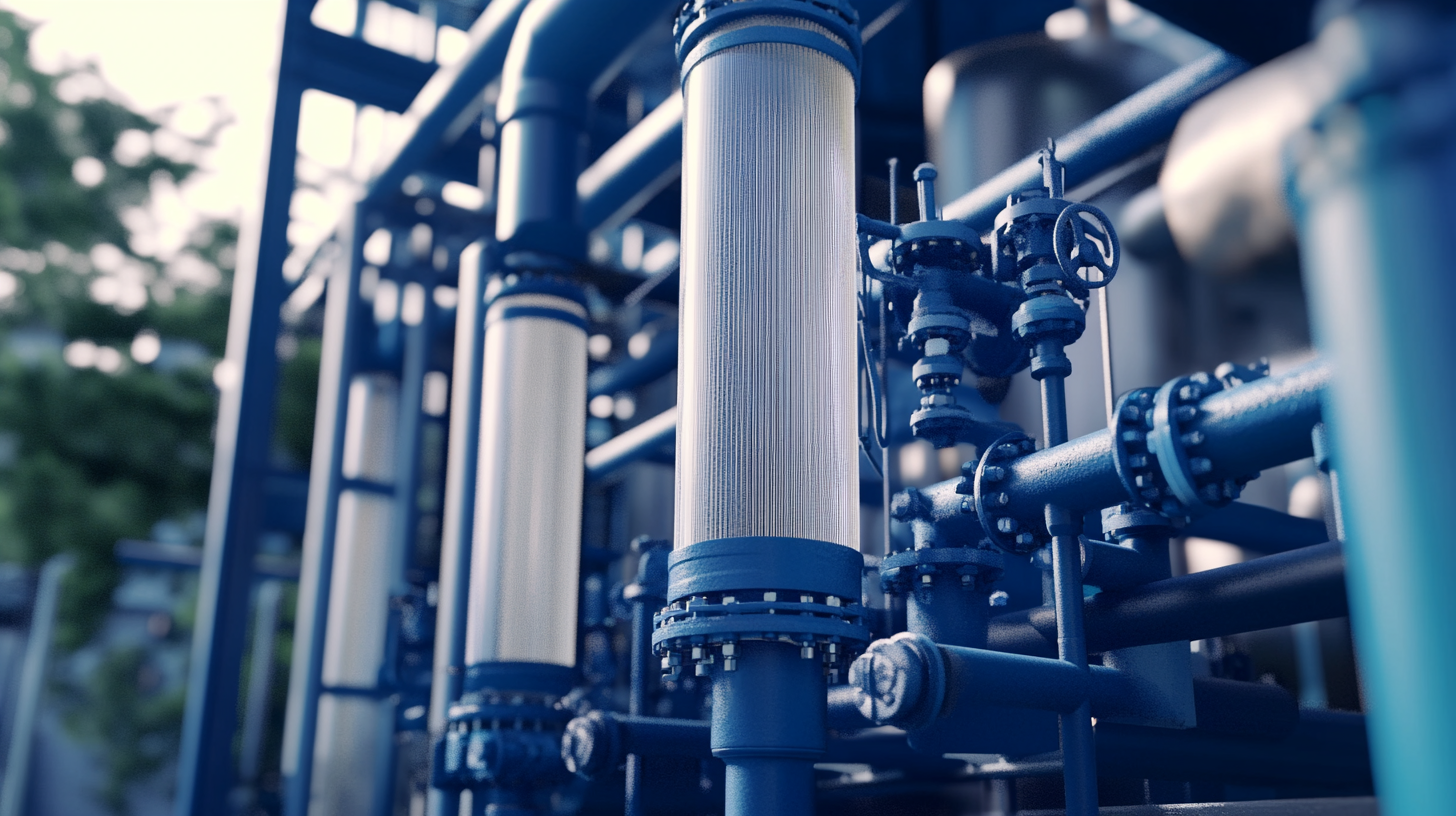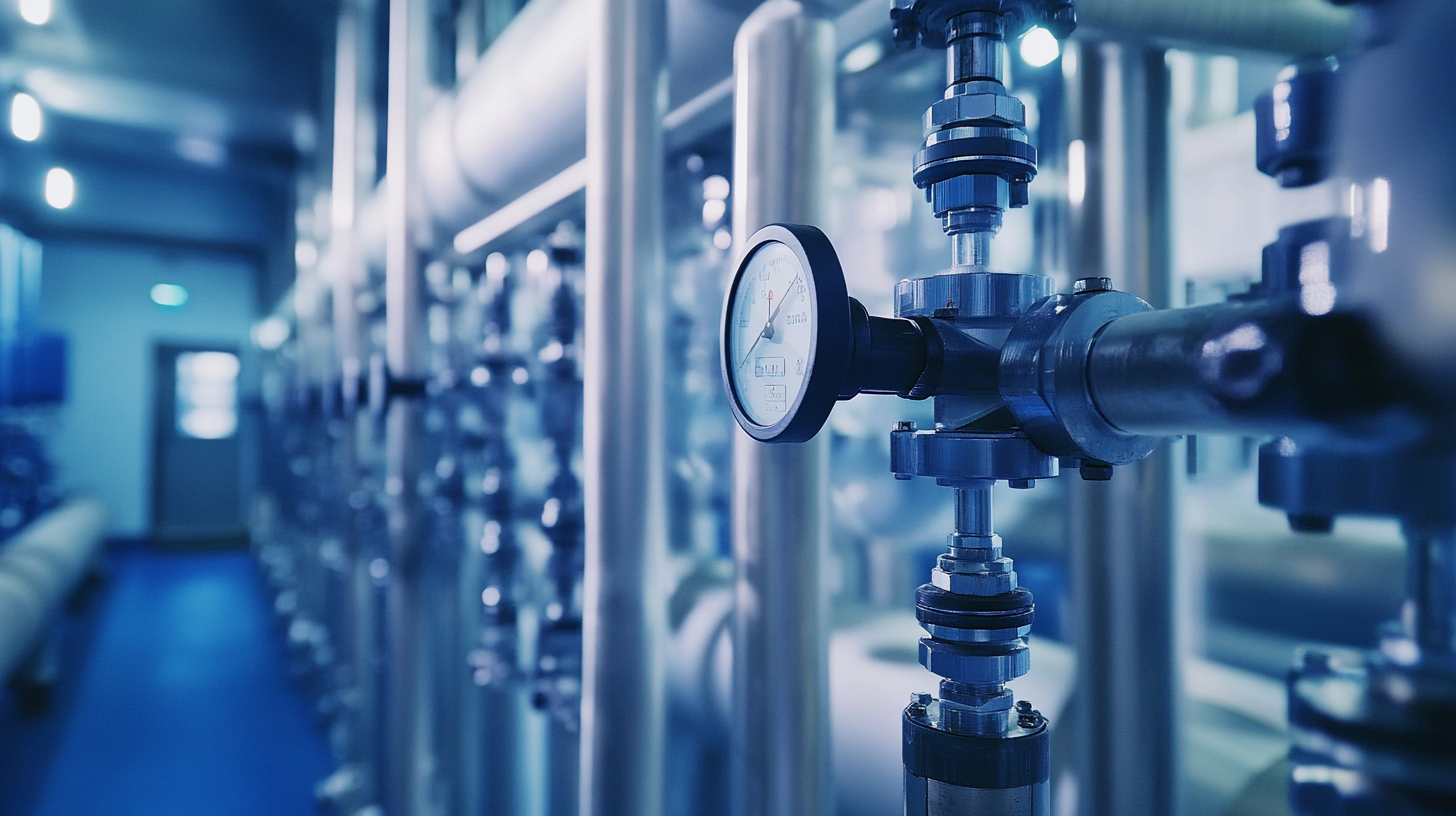Leave Your Message
Request a Quote
In today's rapidly evolving industrial landscape, the selection of the right Membrane Filter is critical for optimized operational efficiency and product quality. According to a recent report by Freedonia Group, the global demand for filtration products is projected to reach $36 billion by 2025, with membrane filtration technologies playing a pivotal role in various sectors, including water treatment, pharmaceuticals, and food processing. The versatility and effectiveness of Membrane Filters are underscored by their ability to separate particles at the molecular level, allowing manufacturers to achieve stringent purity standards. As industries increasingly prioritize sustainability and compliance with regulations, understanding technical specifications and selecting the appropriate Membrane Filter becomes essential for achieving desired outcomes while minimizing costs and environmental impact. This blog will guide you through the key factors to consider when choosing the best Membrane Filter for your specific industrial needs.

When it comes to selecting the appropriate membrane filter for industrial applications, understanding the various types available is essential. Membrane filters can be categorized into several types, including microfiltration, ultrafiltration, nanofiltration, and reverse osmosis, each suited for different filtration requirements. Microfiltration is ideal for separating larger particles, while ultrafiltration can effectively remove smaller solutes, such as proteins and bacteria. Nanofiltration offers even finer filtration, making it suitable for removing divalent ions and small organic molecules. Reverse osmosis, on the other hand, is the most advanced method, used primarily for desalination and producing high-purity water.
In the rapidly growing membrane filtration market, projected to reach USD 9.9 billion by 2028, it's crucial for industries to not only understand these types but also their specific applications. For instance, the increasing demand for water treatment solutions necessitates an in-depth knowledge of how different membranes perform under varying operational conditions, such as water conductivity and fouling. Recent advancements in membrane technology, including surface grafting modifications, significantly enhance filtration efficiency and longevity. Therefore, evaluating industrial needs carefully and aligning them with the right membrane filter type can lead to optimized processes and improved outcomes in water treatment and other applications.

When selecting a membrane filter for industrial applications, it is crucial to pay attention to industry standards and certifications that ensure the filter’s reliability and efficiency. Filters must meet regulatory compliance guidelines such as those set by the Environmental Protection Agency (EPA) and the American National Standards Institute (ANSI). These standards guarantee that the membranes can effectively remove contaminants while maintaining the integrity of water or air quality. Reports indicate that filters compliant with these standards not only enhance operational efficiency but also minimize potential liabilities.
Additionally, certifications such as the National Sanitation Foundation (NSF) certification are essential for applications in sectors like food and beverage, pharmaceuticals, and water treatment. The NSF certification verifies that the filter materials are safe and effective for their intended use. According to industry data, certified membrane filters show a significant increase in consumer trust, leading to better market acceptance and performance in demanding environments. Therefore, thoroughly reviewing these certifications can guide businesses in making informed decisions that align with their operational safety and efficiency goals.
When selecting a membrane filter for industrial applications, understanding flow rates and retention characteristics is crucial for ensuring optimal performance. Flow rate refers to the volume of fluid that can pass through a membrane filter over a specified period, which directly affects the efficiency of the filtration process. High flow rates can lead to faster production cycles, but they need to be balanced with effective particle retention. Analyzing the flow rate under various conditions, such as pressure changes and fluid viscosity, is vital to identify the most suitable filter for specific applications.
Retention characteristics, on the other hand, define the filter's ability to trap particles of different sizes. It's essential to match the filter's pore size with the application requirements to ensure that the desired contaminants are effectively removed while allowing the target substance to pass through. Different materials and membrane types exhibit varying retention properties, influencing the overall performance of the filtration system. By thoroughly assessing both flow rates and retention characteristics, industries can select filter membranes that provide high efficiency and longevity, ultimately enhancing operational productivity and reducing costs.
| Filter Type | Pore Size (µm) | Flow Rate (L/h) | Retention Rate (%) | Material | Temperature Tolerance (°C) |
|---|---|---|---|---|---|
| Microfiltration | 0.2 | 100 | 99 | Polypropylene | 40 |
| Ultrafiltration | 0.01 | 50 | 95 | Polyethersulfone | 45 |
| Nanofiltration | 0.001 | 30 | 90 | Thin-film Composite | 50 |
| Reverse Osmosis | 0.0001 | 20 | 99.5 | Composite Polyamide | 60 |
When choosing the best membrane filter for industrial needs, evaluating cost-effectiveness and longevity is paramount. Recent advancements in membrane technologies, particularly in microfiltration and ultrafiltration, have significantly influenced the industry. The microfiltration membranes market is anticipated to reach USD 2.16 billion by 2029, driven by the need for efficient pollutant elimination in various sectors, including wastewater treatment and gas filtration. The longevity of these membranes largely depends on their material and design, making it crucial to assess their performance under specific operational conditions.

Tip 1: Consider the specific contaminants your process will encounter. For instance, using advanced methods like coagulation and flocculation as a pretreatment can enhance the longevity of membrane filters by reducing fouling, particularly in industries dealing with high organic loads, such as textiles.
Tip 2: Evaluate the balance between initial investment costs and long-term operational savings. Investing in high-quality, durable membranes may incur upfront costs, but they can reduce maintenance and replacement expenditures over time, particularly in systems where filter efficiency directly impacts operational effectiveness.
In recent years, the membrane filter technology market has witnessed significant advancements, influenced by the increasing demand for efficient filtration solutions across various industries. Notably, the global water filtration systems market is projected to reach USD 35.18 billion by 2034, growing at a CAGR of 9.61%. This surge is driven by the growing awareness of water quality issues and the need for reliable filtration systems to ensure safe drinking water and wastewater management. As industries become more reliant on sophisticated filtration techniques, membrane filters are emerging as a crucial component in achieving regulatory compliance and improving product quality.
The pharmaceutical sector is also experiencing substantial growth, with the membrane filtration market expected to expand from USD 10.8 billion in 2024 to USD 19.6 billion by 2030. Factors such as the rising prevalence of chronic diseases and the subsequent increase in pharmaceutical production are propelling this growth. Additionally, technological innovations, particularly in nanotechnology, are enhancing the performance and efficiency of membrane filters, making them indispensable in various applications, including water treatment, food and beverage processing, and medical industries.
These trends indicate a robust future for membrane filtration technology, supporting a wide range of industrial needs while addressing global market dynamics.

